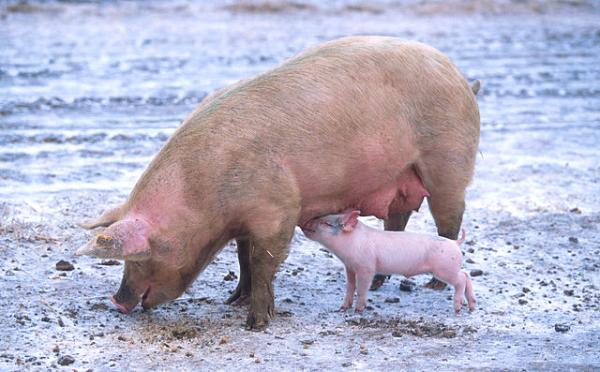Patent No. 4,736,866 granted in 1988 was the first intentionally modified animal, the OncoMouse. Since that time, while several other genetically altered laboratory animals have been created, only one animal food source, the AquAdvantage Salmon has been commercialized and sold and only in Canada. At the same time an area, roughly the size of Chile has been farmed with crops genetically modified, sold and eaten – why the difference?
In 1980, the FDA classified the genetical alterations of an animal, not the animal itself, as a drug – subject to its regulatory oversight. At the time, the FDA was explicit in stating their concerns were about recombinant DNA, where foreign genes are inserted into a host. But CRISPR [1] has changed the way alterations are made; so in the past year the FDA clarified their position, any intentional genetic modification resulted in a “drug” subject to FDA review. This is a very different conclusion than the one reached by the FDA about plants, were CRISPR modifications that did not involve insertions of foreign genes, just simple base substitutions or deletions do not automatically need to be reviewed. Laboratory animals are considered different and are essentially exempt from these regulations.
We have been breeding animals for generations where random mutagenesis does the work, and we choose the phenotypes we want to promote. The same underlying base substitution or deletion performed randomly by nature, when performed intentionally, now requires regulatory oversight and solely for animals. It makes little scientific or common sense. If plants with simple base changes are considered “biosimilar” enough to not require additional regulation, what is there about an animal that doesn’t allow for “biosimilar” at all?
What is different about animals that the process and not the resulting product pose a risk? From a scientific point of view, nothing.
Another difference pointed out by the authors is the FDA requirement to examine the founder animal closest to the ones in commercial use. But animal husbandry is different that plant cultivation. With one genetically modified plant it is feasible to generate enough seeds to grow commercially viable, and of course safe, crops. Animals have varying lengths of gestation and progeny so to creating a herd requires more than one founder animal, perhaps many. Are they all to be tested and what exactly are we looking to find? As the article points out, differentiating intentional alterations from concerning, off-target changes [2], is challenging. In studies in cattle, the average animal was found to have 65 de novo mutations 6o single substitutions, five small insertions or deletions.
Is there a more rational, dare I say scientific approach. The authors point to Argentina where plants and animals are treated in the same way. If the product of genetic engineering is “the same” and here we can substitute biosimilar, then it is not considered to require the same regulatory oversight as plants or animals with recombinant DNA. The three regulatory agencies, the EPA, USDA, and FDA, cobbled together a regulatory framework for genetically modified foods in 1980; and have built upon that somewhat shaky foundation ever since. Is it time for rebuilding from the foundation up or at least being consistent in the treatment of our plant and animal foods?
[1] If you are unfamiliar with the science behind CRISPR, look at this article by my talented colleague, Julianna LeMieux
[2] An off-target mutation is one that the scientists, using CRISPR, did not intend to occur. The concern about these changes has been subject to a great deal of controversy lately when one group of scientists claimed multiple off-target mutations, a paper subsequently retracted.
Source: The Importance of a Novel Product Risk-Based Trigger for Gene-Editing Regulation in Food Animal Species CRISPR Journal DOI: 10.1089/crispr.2017.0023




